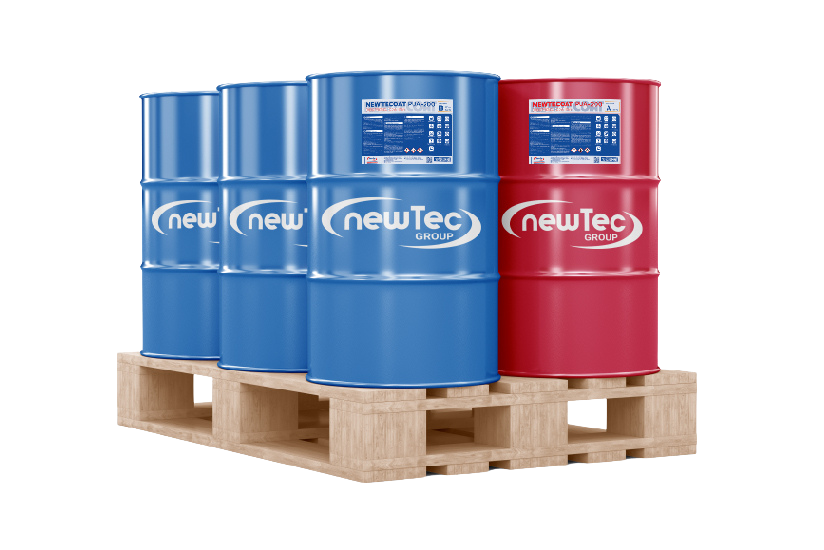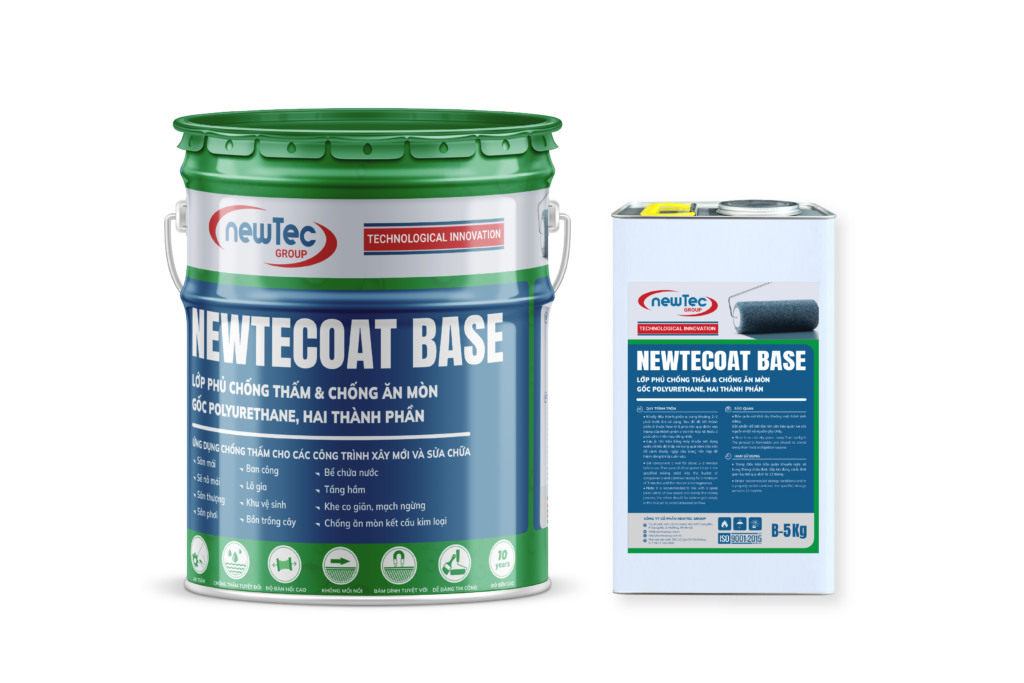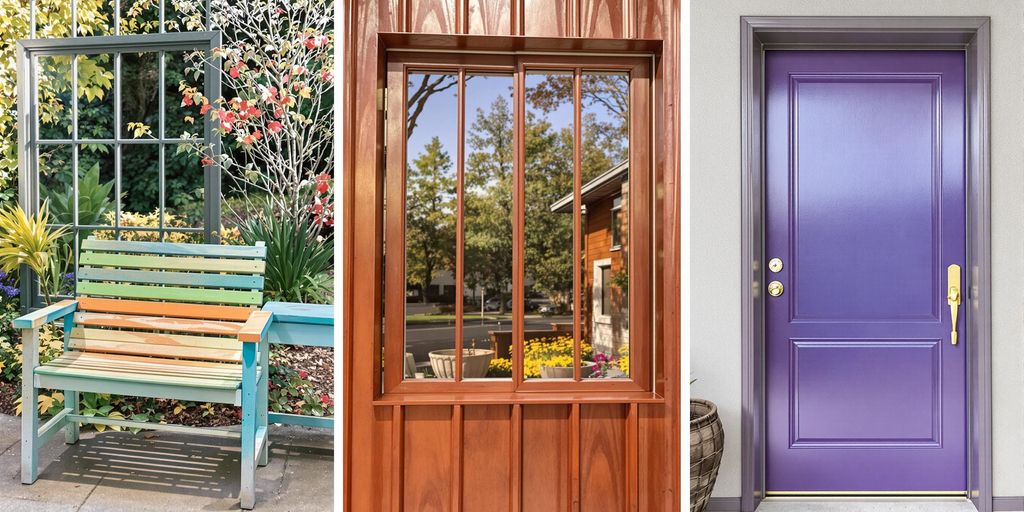Polyurethane paint is a versatile coating that has found its way into many industries and everyday products. If you’ve ever wondered what is polyurethane paint used for, you’re not alone. This paint is known for its durability and flexibility, making it a popular choice for everything from industrial applications to consumer goods. In this article, we’ll explore the various uses of polyurethane paint and why it’s such a valuable material.
Key Takeaways
- Polyurethane paint is used in heavy-duty coatings for machinery and equipment.
- It’s a common choice for consumer products like furniture and clothing.
- In the automotive industry, it protects both exterior and interior components.
- Polyurethane paint is applied in construction for surface protection and finishing.
- Medical equipment often utilizes polyurethane paint for its durability and flexibility.
Understanding Polyurethane Paint
Definition and Composition
Okay, so what is polyurethane paint? Basically, it’s a coating that’s super popular because it’s tough and can handle a lot of wear and tear. It’s made by mixing stuff called polyols and isocyanates. This creates a polymer that forms a protective layer when it dries. Think of it like a shield for whatever you’re painting. It’s not just one thing; there are different kinds, each with its own special recipe and purpose. This PU paint is a versatile option for many applications.
Types of Polyurethane Paint
There are two main types: water-based and oil-based. Water-based is great for indoor projects because it doesn’t smell as strong and cleans up easily with soap and water. Oil-based is tougher and better for outdoor stuff that needs to stand up to the weather. Then you have single-component and two-component options. Single-component is ready to go right out of the can, while two-component needs to be mixed before you use it, but it usually gives you a harder, more durable finish. It really depends on what you’re trying to do.
Here’s a quick rundown:
- Water-Based: Low odor, easy cleanup, good for indoor use.
- Oil-Based: High durability, solvent clean up, better for outdoor use.
- Single-Component: Ready to use, less durable.
- Two-Component: Requires mixing, more durable.
Key Properties
Polyurethane paint has some awesome qualities. It’s super resistant to scratches, chemicals, and UV rays, which means it keeps things looking good for a long time. It’s also flexible, so it can handle some bending and movement without cracking. Plus, it can be made to be glossy, matte, or anything in between, so you can get the exact look you want. It’s also known for its heat and cold resistance.
I’ve used polyurethane paint on a bunch of projects, and I’m always impressed by how well it holds up. It’s definitely worth the extra cost if you want something that’s going to last. It’s not always the easiest to work with, but the results are usually worth it. Just make sure you read the instructions carefully and take your time.
Industrial Applications of Polyurethane Paint
Polyurethane paint really shines in industrial settings. It’s not just about making things look pretty; it’s about protection, durability, and keeping things running smoothly. From heavy machinery to the floors you walk on, polyurethane plays a big role.
Heavy-Duty Coatings
Polyurethane coatings are a go-to for protecting surfaces in tough environments. Think about factories, warehouses, and even construction sites. These places see a lot of wear and tear, and polyurethane helps surfaces withstand impacts, chemicals, and abrasion. It’s like giving everything a suit of armor. For example, industrial coating is often applied to floors to prevent damage from heavy machinery.
- Protection against corrosion
- Resistance to chemicals and solvents
- Ability to withstand heavy impacts
Polyurethane coatings are designed to be flexible without losing their strength. This elasticity allows them to withstand high pedestrian traffic and resist cracking, making them ideal for industrial floors. Unlike rigid coatings, polyurethane can absorb impacts and redistribute stress, which prolongs the life of the coated surface.
Adhesives and Sealants
Beyond just coatings, polyurethane is also a key ingredient in many industrial adhesives and sealants. These materials are used to bond different components together, seal gaps, and prevent leaks. They need to be strong, durable, and able to withstand harsh conditions. Polyurethane-based adhesives and sealants fit the bill perfectly.
- Bonding metal, plastic, and other materials
- Sealing joints and seams
- Providing a flexible and durable bond
Machinery and Equipment Protection
Industrial machinery and equipment take a beating. They’re constantly exposed to stress, heat, chemicals, and other hazards. Polyurethane coatings can help protect these assets, extending their lifespan and reducing maintenance costs. It’s a smart investment for any industrial operation.
- Protecting against rust and corrosion
- Reducing wear and tear
- Extending equipment lifespan
Consumer Products Featuring Polyurethane Paint

Polyurethane paint isn’t just for factories and cars; it shows up in tons of stuff around your house. It’s valued for its ability to protect surfaces while also looking good, making it a popular choice for manufacturers. Let’s take a look at some common examples.
Furniture and Bedding
Think about your favorite comfy chair or that mattress you sink into every night. Chances are, polyurethane is playing a role. Polyurethane foam is a key component in cushioning, providing support and comfort. But it’s not just the foam; polyurethane coatings are often used on wooden furniture to protect against scratches, spills, and everyday wear and tear. This helps keep your furniture looking newer for longer. I remember spilling coffee on my coffee table last year, and I was so glad it had a polyurethane finish! It wiped right up.
Clothing and Accessories
You might be surprised to find polyurethane in your wardrobe, but it’s there! It’s often used in synthetic fabrics to add water resistance or flexibility. You’ll also find it in accessories like bags and shoes, where it provides a protective layer. For example, many raincoats use a polyurethane coating to keep you dry. Shoe soles also commonly use polyurethane materials for their durability and flexibility.
Household Items
From kitchen cabinets to flooring, polyurethane paint protects a wide range of household items. It’s a popular choice because it’s durable, easy to clean, and comes in various finishes. Think about the wear and tear your kitchen cabinets go through – polyurethane helps them withstand spills, bumps, and constant use. Here’s a quick rundown of where you might find it:
- Kitchen Cabinets: Protection against grease and water.
- Flooring: Adds a durable, scratch-resistant layer.
- Countertops: Provides a smooth, easy-to-clean surface.
I’ve noticed that items with a polyurethane finish tend to last longer and require less maintenance. It’s a worthwhile investment for any homeowner looking to protect their belongings.
Polyurethane Paint in Automotive Uses
Exterior Coatings
Okay, so you know how cars need to look good and, like, not fall apart the second it rains? That’s where polyurethane paint comes in. It’s used as a top coat because it’s super durable and can handle all sorts of weather. Think of it as a shield against scratches, UV rays, and whatever else the road throws at it. Plus, it keeps the car looking shiny for way longer than some other paints. It’s a pretty big deal for keeping your ride looking fresh.
Interior Components
It’s not just the outside that gets the polyurethane treatment. Inside your car, you’ll find it on dashboards, door panels, and even steering wheels. It makes these parts more resistant to wear and tear. Think about how often you touch your steering wheel – polyurethane helps it last. It also gives a nice, smooth finish that just feels better. It’s all about making the inside of your car a nicer place to be. interior components are protected by polyurethane.
Durability and Protection
Polyurethane paint really shines when it comes to keeping your car safe from the elements and everyday wear. It’s flexible, so it can handle impacts without cracking, and it’s resistant to chemicals, so things like road salt and spilled coffee won’t ruin the finish. It’s also great at preventing rust and corrosion, which is a big deal for keeping your car on the road for longer. Basically, it’s a tough coating that helps your car stay in good shape, inside and out. The durability and protection offered by polyurethane is unmatched.
I remember when my dad bought his old pickup truck. He immediately got a polyurethane coating applied. He swore it was the best thing he ever did for that truck. He said it kept the paint looking new for years, even though he used it for everything from hauling firewood to going off-roading. He was always going on about how tough it was and how it saved him a ton of money on repairs. He was a big fan of polyurethane, that’s for sure.
Construction and Building Applications
Surface Protection
Polyurethane paint really shines when it comes to protecting surfaces in construction. Think about it: exposed wood, concrete, or metal – all vulnerable to weather, wear, and tear. Polyurethane coatings provide a tough, flexible barrier that can withstand a lot. They resist abrasion, chemicals, and UV damage, which is super important for things that are outside all the time. I’ve seen it used on everything from decks and fences to structural steel, and it really makes a difference in how long those things last. It’s not just about looks; it’s about preventing decay and corrosion, which can save a ton of money in the long run.
Insulation Materials
Polyurethane isn’t just for coatings; it’s also a key ingredient in insulation. Polyurethane foam, in particular, is a popular choice for insulating walls, roofs, and floors. It has a high R-value, which means it’s really good at reducing heat transfer. This can lead to significant energy savings, which is great for both the environment and your wallet. Plus, polyurethane foam can be applied in different ways, like spray foam or rigid boards, making it versatile for different construction needs. I remember when they insulated my attic with spray foam – the difference in temperature was noticeable almost immediately. It’s a pretty effective way to improve building insulation.
Finishing Touches
Beyond protection and insulation, polyurethane paint is also used for adding those final, important finishing touches to buildings. It can provide a durable and attractive finish for interior trim, doors, and cabinets. It comes in a variety of sheens, from matte to glossy, so you can get the exact look you want. Plus, it’s relatively easy to apply, whether you’re using a brush, roller, or sprayer. I’ve used it on several DIY projects around the house, and I’ve always been happy with the results. It gives a professional-looking finish that holds up well over time.
Polyurethane coatings are also used in specialized applications like roofing systems, where they provide waterproofing and UV protection. They can also be found in joint sealants and adhesives, contributing to the overall structural integrity of buildings. The versatility of polyurethane makes it an important material in modern construction.
Here’s a quick rundown of some common construction applications:
- Flooring: Provides a tough, scratch-resistant surface.
- Exterior Siding: Protects against weather and UV damage.
- Roofing: Offers waterproofing and insulation.
Medical Equipment and Polyurethane Paint

Surgical Drapes and Tubing
Polyurethane plays a surprisingly important role in medical settings, especially when it comes to patient care. Surgical drapes and tubing benefit greatly from polyurethane’s flexible and protective qualities. Think about it: surgical drapes need to be impermeable to fluids, yet flexible enough to conform to the patient’s body. Polyurethane films and coatings achieve this balance. Similarly, medical tubing needs to be durable, resistant to chemicals, and flexible enough to navigate complex pathways within the body. Polyurethane excels in these applications, offering a reliable and safe material for critical medical procedures.
Wound Dressings
Polyurethane films are also used in advanced wound dressings. These dressings offer several advantages over traditional gauze:
- They maintain a moist wound environment, which promotes faster healing.
- They are breathable, allowing oxygen to reach the wound while preventing bacterial contamination.
- They are conformable and comfortable for the patient.
Polyurethane-based wound dressings can significantly reduce healing time and improve patient comfort. Their ability to create an optimal healing environment makes them a preferred choice for many healthcare professionals.
Durability in Medical Devices
Beyond drapes, tubing, and dressings, polyurethane finds its way into a wide array of medical devices. From polyurethane coating for electronics in monitoring equipment to protective layers on implantable devices, the material’s durability and biocompatibility are highly valued. The ability to sterilize polyurethane components without significant degradation is another key advantage. This ensures that medical devices remain safe and effective throughout their lifespan. The versatility of polyurethane allows manufacturers to create devices that are both robust and patient-friendly, contributing to better healthcare outcomes.
Comparative Advantages of Polyurethane Paint
Versus Other Coatings
Okay, so polyurethane paint gets compared to other stuff all the time – epoxy, varnishes, you name it. The big thing is, polyurethane is super flexible. Epoxy? Not so much. That means polyurethane can handle stuff expanding and contracting without cracking. Think about it – that’s huge for anything outside that deals with weather. Plus, it’s usually easier to put on because you don’t have to mix a bunch of stuff together like with epoxy. It’s also pretty tough when it comes to scratches and scrapes. It can take a beating, which is why you see it on floors and furniture a lot.
Cost-Effectiveness
Alright, let’s talk money. Upfront, polyurethane might seem a little pricier than some other options. But here’s the deal: it lasts way longer. You won’t be re-doing the job every year. And because it’s so durable, you don’t have to mess with it as much. Less maintenance equals less money spent down the road. So, yeah, you might pay a bit more at first, but you’ll save in the long run. Think of it like buying a durable coating – you get what you pay for.
Long-Term Performance
Polyurethane paint really shines when you look at the long game. It can handle extreme temperatures without losing its mind. Hot, cold, whatever – it stays put. It’s also great at resisting chemicals and all sorts of nasty stuff. Plus, it doesn’t fade or yellow as quickly as some other paints. So, years later, your stuff still looks pretty good. It’s a solid choice if you want something that’s going to hold up over time.
I’ve used polyurethane on a bunch of projects around the house, and I’m always impressed with how well it holds up. I painted my deck with it a few years ago, and it still looks great. No peeling, no fading, just solid protection. It’s definitely worth the investment if you want something that lasts.
Wrapping It Up
So, there you have it! Polyurethane paint is pretty much everywhere, and for good reason. Its toughness and flexibility make it a go-to choice for all sorts of projects, from industrial machinery to everyday furniture. Whether you’re looking to protect your floors or add a splash of color to your home, polyurethane paint has got you covered. It’s not just about looks, either; it stands up to wear and tear like a champ. So next time you’re tackling a DIY project or working on something more professional, consider using polyurethane paint. It might just be the perfect fit for your needs.
Frequently Asked Questions
What is polyurethane paint made of?
Polyurethane paint is made from a mix of chemicals that create a strong, flexible coating. It is known for its durability and resistance to wear.
Where is polyurethane paint commonly used?
You can find polyurethane paint in many places, including factories for heavy machinery, on furniture, and even in cars for protective coatings.
Is polyurethane paint safe to use?
Yes, polyurethane paint is generally safe when used properly. However, it’s important to follow safety guidelines and use it in well-ventilated areas.
How does polyurethane paint compare to other paints?
Polyurethane paint is tougher and more flexible than many other types of paint, making it a great choice for surfaces that need extra protection.
Can polyurethane paint be used outdoors?
Absolutely! Polyurethane paint is often used for outdoor items because it can withstand weather and UV rays.
How do you clean surfaces painted with polyurethane?
To clean surfaces with polyurethane paint, use a mild soap and water solution. Avoid harsh chemicals that could damage the finish.





You may also be interested in
Do You Have to Sand Between Coats of Polyurethane for a Flawless Finish?
When finishing wood, achieving that perfect shine can feel like a daunting task. One question
Apr
Is Polyurethane Foam Waterproof? Understanding Its Water Resistance Properties
When it comes to the question, “Is polyurethane foam waterproof?” the answer isn’t as straightforward
Apr
What is Polyurethane Paint Used For? Exploring Its Versatile Applications
Polyurethane paint is a versatile coating that has found its way into many industries and
Apr
Is Polyurethane Safe? Understanding the Risks and Benefits of This Versatile Material
Polyurethane is a popular material found in many everyday products, from furniture to insulation. But
Mar
What Does Polyurethane Do? Understanding Its Benefits and Applications in Woodworking
Polyurethane is a popular finish in woodworking, and for good reason. It offers a tough
Mar
Understanding What is Polyurethane Made Of: A Comprehensive Guide
Polyurethane is a material that shows up in a lot of everyday items, from furniture
Mar
What is Polyurethane Coating and Why You Should Consider It for Your Next Project
If you’re looking for a reliable way to protect surfaces, you might want to consider
Mar
Understanding What Is Polyurethane Foam Made Of: A Deep Dive into Its Composition and Production
Polyurethane foam is everywhere, from the cushions on your couch to the insulation on your
Mar